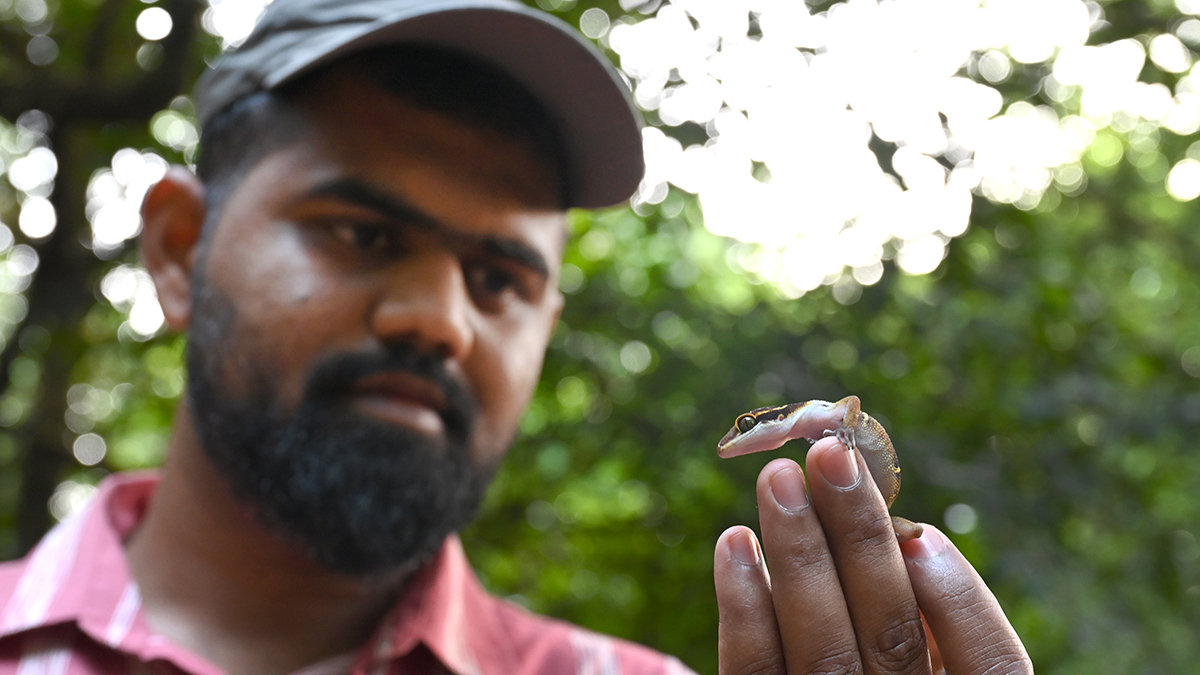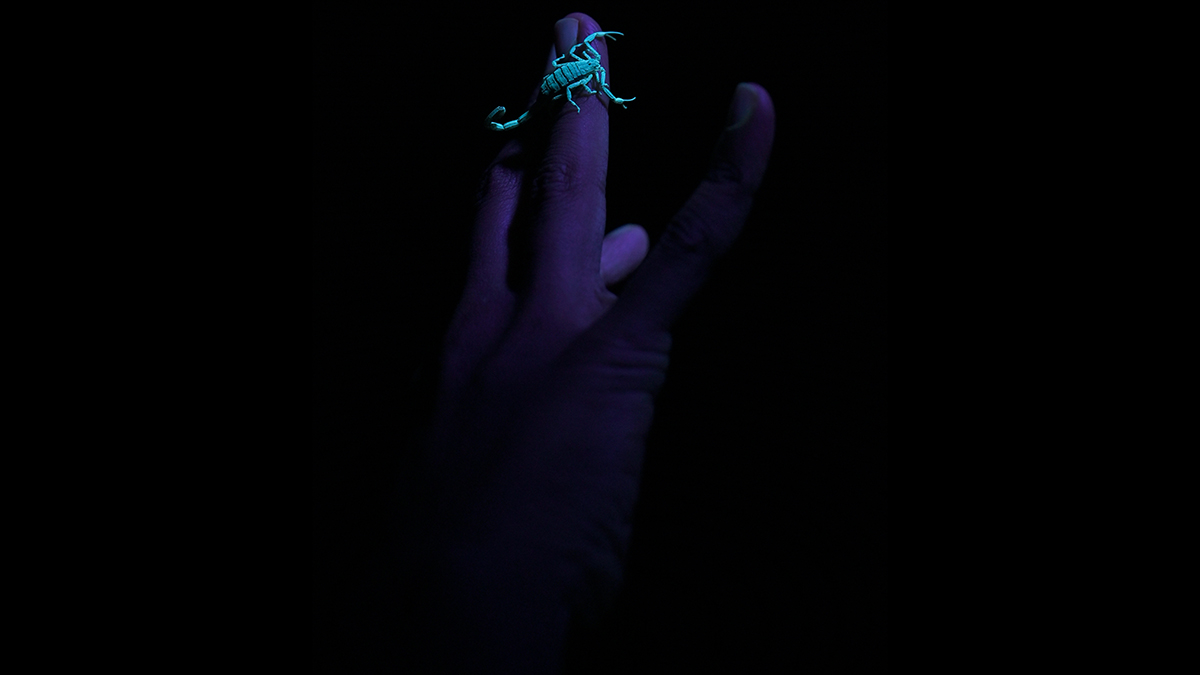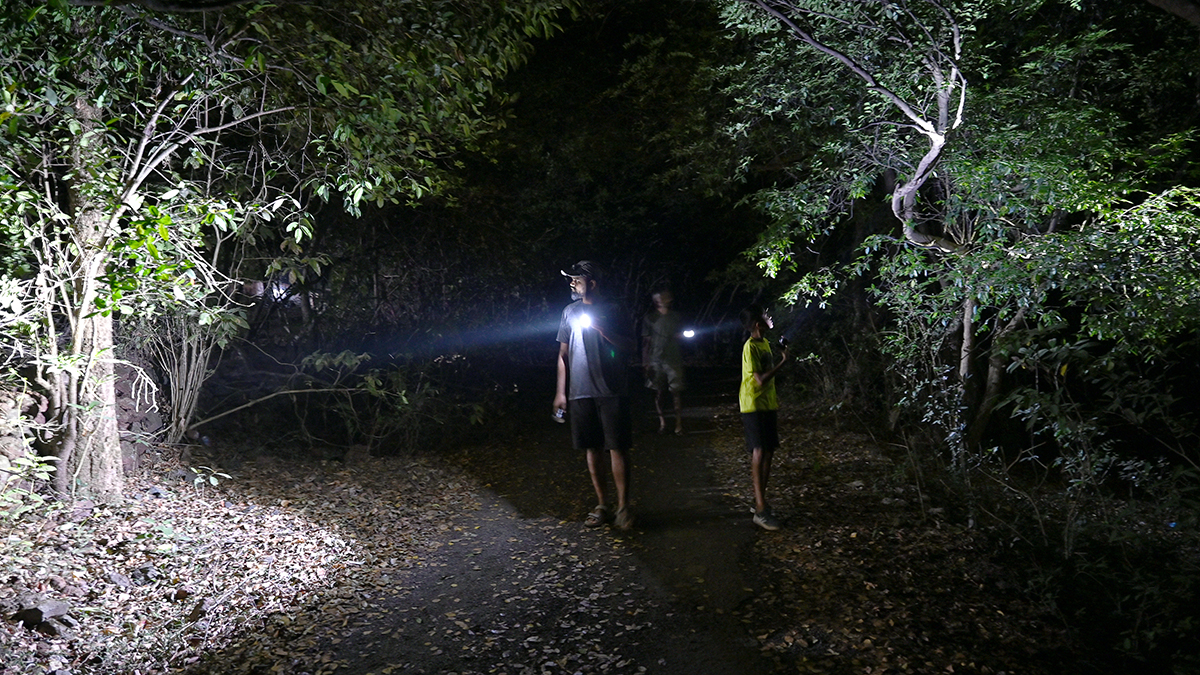It had been 48 hours since we began looking for the elusive trapdoor spider. Four of us, including scientist Akshay Khandekar, were crouched on the ground littered with dry leaves, staring at a mound of soil under a tree. Silence was key. We were in Amboli forest, a protected reserve in Maharashtra’s Sindhudurg district, some 700m above sea level. This area falls under the jurisdiction of the Sawantwadi forest department. Mercury was at 34 degrees Celsius. Sticky heat.
As we closed in on 20 minutes on our haunches, Khandekar inspected the soil under the bark of a tree with his little finger, very lightly, as if caressing a newborn. Nothing happened. We moved on.
In 2020, this was the very spot where Khandekar, 31, discovered the first trapdoor spider species from the Western Ghats. That moment was historic and rewarding, but the search had been frustrating and time-consuming, as it was now. Then, it had taken him three months to find one specimen of the spider―he named it Conothele Ogalei, after his friend and fellow researcher Hemant Ogale.
Khandekar, a field biologist and taxonomist, had read that there are about 35 species of the trapdoor spider spread across south, central and northeast India, but the genus Conothele had never been found in the Western Ghats. He decided he was the man for the job.
But that is the problem with trapdoors; they are not meant to be found. These elusive creatures dig into the ground and, at the entrance of the burrow, build silken-hinged trapdoors. They feed by quickly opening the door and grabbing insects passing by. You cannot accidentally find these spiders. Khandekar knew this; he poked several surfaces gently, peeped into deep crevices and, at times, was flat on his belly. And finally, there it was―a nearly perfect cylindrical hole on the ground, the entrance to a burrow. He took out forceps from his backpack, and pulled out the stubborn creature by its legs. He put it in a plastic container with holes, and the door and the attached mud in another container. Box ticked.
 Khandekar with a gecko called Cyrtodactylus albofaciatus.
Khandekar with a gecko called Cyrtodactylus albofaciatus.
It was two nights ago that we began this expedition to see how scientists go about discovering new species, especially reptiles and amphibians. That first night, at around 10pm, we set out on a walk to look for nocturnal geckos in the reserve. The gear: two layers of clothing, full sleeves, headlights, mosquito repellent, sports shoes, backpack with forceps, plastic container, a bottle of pure alcohol (to preserve the specimen). We had walked for miles, from the busy highway into pitch darkness and silence of the jungle. Crickets and our own footsteps were our soundtrack. We were scared. Khandekar had shown me a video of how his left leg was completely swollen with coagulated blood after a horde of leeches sucked on it. He was in the Koyna sanctuary in Maharashtra and realised the damage only two hours later. Usually, researchers apply salt, diluted Dettol and tobacco when they head into leech-infested areas. That day, Khandekar only had some salt.
What was just an anecdote to Khandekar was a terrifying warning for me. About a kilometre or two inside the forest, Khandekar pointed to a scorpion that glowed when his UV torchlight hit it. Just then, as the light fell on the nearby pile of leaves, I found a leaf that was exceptionally beautiful, long and curvy. Tempted, I tried pulling it, but it would not come off. Khandekar pushed me back and the leaf fell with a thud. It was a venomous pit viper, camouflaged in the green of the trees. Had it bitten me, we would have had nowhere to go; there was no clinic for kilometres. My heart would race again the following night. We were walking by the stream and I kept looking over my back with each step. I had been told that tigers and panthers often came to the stream for water. If we did see them, I was told, it was wise to stay put, be quiet and point the torchlight to the creatures’ side. I suddenly heard a noise and froze. “Must be a tiger,” said Khandekar. He and his colleague Swapnil Pawar were calm. As was Pawar’s ten-year-old son. After a few minutes of tension, Khandekar began walking ahead. “It must have returned,” he said. “Don’t worry, tigers of the Western Ghats aren’t as fierce and wild as those in the other parts of the country. They will not harm you unless you threaten them.”
 Call of the wild: Hemant Ogale
Call of the wild: Hemant Ogale
Back to the first night. After the snake encounter, I was on my toes. We kept going. Khandekar soon spotted a female, sub-adult prashadi―a spotted gecko named after zoologist Baini Prashad―on a decrepit boundary wall. She was alert and bit him as he grabbed her. He wanted to pull away as she continued to prick his arm, but he calmly examined her before letting her go. He had a red patch on his arm for his efforts, and it kept itching for a long time. We found about 10 geckos that night, almost half of them with at least four eggs each. “Interesting,” said Khandekar. “So this means if they lay eggs now, the juveniles will hatch just before the monsoon and will have plenty of food to eat.” This became the subject for his next research paper.
“With taxonomy around bigger mammals and birds having received quite a bit of attention, more scientists and researchers are now paying attention to lesser known taxa like amphibians and reptiles, and they have discovered hundreds of new species that were not known before,” said Rahul Khot, deputy director, Bombay Natural History Society. He looks after the oldest natural history collection in South Asia with more than 1,50,000 specimens.
 A trapdoor spider with its burrow in Amboli forest.
A trapdoor spider with its burrow in Amboli forest.
“Take, for instance, the fan-throated lizard,” he added. “Earlier, they were thought to be a single species, but scientist Deepak Veerappan, a herpetologist from Chennai who pursued a PhD on this subject, showed us that fan-throated lizards consist of at least 15 species in India. But, at present, India is way behind in terms of identifying new species.”
The field study of discovering this lesser known taxa, say researchers, is “mind-boggling” and most often a matter of chance. It is all about being patient, persisting and looking at the right place. But, foremost is an undying interest in biodiversity and a certain madness for your subject, said myrmecologist Himender Bharti, professor of zoology and environmental sciences. Popularly known as the ‘Ant Man of India’, Bharti has discovered a number of new species of ants from the Shivaliks, northeast Himalayas and the Western Ghats. In fact, he has named ant species after his daughters―Mermica adrijae and Mermica urvijae.
 Wings and stings: A dragonfly called Palpopleura sexmaculata.
Wings and stings: A dragonfly called Palpopleura sexmaculata.
Talking to THE WEEK on the phone, Bharti said researchers were mostly enamoured by birds or butterflies, but just clicking pictures, downloading information and sharing it on social media added nothing to science.
Bharti, who is a member of the International Union for Conservation of Nature group for the protection of Asian ants, recalled an anecdote when he found himself lost deep in the jungles of Indonesia. “At Mount Gede, I, along with two other friends―one from Germany and the other from England―reached the summit at 4pm,” he said. “So, by the time we started the descent, it was already getting dark. Along the way, my shoes tore and I lost my way. As Mount Gede is a tropical rainforest where snakes abound, I was sceptical about making it back to the cottage safely. Treading cautiously, I took my cues from the ant lines along the pathway because, in the thick leaf litter, that was an indicator that there is ground. Also, snakes generally keep away from ant-infested areas, so I was safe.”
 A scorpion glows under UV light
A scorpion glows under UV light
This courage to venture into the unknown is what sets wildlife researchers apart. An abandoned palace might be a no-go for city dwellers like me, but it is a treasure trove for the men we were accompanying. And that is where, on the second day, we scouted for spiders, legless amphibians, scorpions, geckos, crabs and eels. Thankfully, it was too hot for snakes to venture out. We were safe. Barely two kilometres away was a valley, a thriving green lung around a flowing stream, from where Hemant Ogale published data of 123 different species of butterflies. A mechanical engineer, he left his job in Mumbai to set up a cottage in Amboli. This was our home for the trip.
At the stream, we saw the Papilio polymnestor, the Maharashtra state butterfly, in all her regality. As per the Wildlife Protection Act, the punishment for catching and killing the butterfly is the same as killing a tiger (seven years in jail), except that in the area we were in, nobody would have known if we had done so. “Here, nobody checks,” said Ogale. “We entered the reserve without bags and instruments, no questions asked. It is sad.”
 Maharashtra’s state butterfly, Papilio polymnestor.
Maharashtra’s state butterfly, Papilio polymnestor.
We walked barely a kilometre from the valley and reached the stream where the damselflies lay their eggs (20 to 30 at a time). Ogale had trained himself to spot the flies; I struggled to see even one. “This is the most ideal location to spot, discover, identify and collect damselflies in the entire Sindhudurg district,” he said. “All you need do is stay quiet, lie on your stomach, keep the camera steady and simply observe. When you have to catch them, you throw a net and collect them in an envelope. Then you dip them in ethanol to preserve their bodies before placing them on a board to evaluate their morphological data.”
I asked him if there were undiscovered species of butterflies or damsel/dragon flies in the area. No was the answer. “I have spent a lifetime observing them day in and day out,” he said. “I think Amboli is covered now.” In the past four years, Ogale has found ten new species of dragonflies and damselflies in Amboli. “It all happened within 100 square kilometres really. I would just keep venturing out to the pastoral land every single day and pen down my observations.”
Such observations go a long way in documenting the lives of these “creepy crawlies”. “Unlike tigers and bigger mammals, these species are hardly given any attention by the authorities,” said Abhijit Das from the Wildlife Institute of India, who has worked on reptiles of the northeast for decades. “This is why not many scientists are taking up research of these smaller invertebrates, even though it is crucial for the sustenance of the entire ecosystem.
“What struck me was how little we know of our biodiversity. It is because these species are less charismatic, [and there is] the huge problem of funding considerations for research. For these kind of species, you need to go to the ghats and islands. Tiger reserves get funding from the Central government every year, but there is no money for biodiversity documentation within tiger reserves. Another challenge is that for most of these species, you need to go into the forest at night, for which special permissions are needed. Also, to see frogs and snakes, one needs to venture into specialised habitats like fast flowing streams, slippery boulders and marshy habitats, especially during monsoon. This is not the time when big mammals or birds are surveyed.”
One of these “less charismatic” creatures we saw on a road near the jungle was the Amboli toad, a Schedule 1 species in the Wildlife Protection Act, which means it needs rigorous protection. It was dead, but its brown and yellow stripes were still striking. “You will find hundreds of them dying on the road during monsoons. Nobody cares,” said Khandekar. “Imagine if just one tiger was killed that way, they would cause a ruckus.”
As we wound up our time in Amboli, I had gained a new perspective on these creatures. When I had first seen a gecko on this trip, on the porch of the cottage, my immediate reaction was a shriek. “Don’t fret, you need to fall in love with them and show them you care,” said Khandekar. “They are emotionally sensitive and understand touch.” Thankfully, it was early in the morning and the cold-blooded gecko was still warming itself; it wasn’t too active. In time, I warmed to it, too. I picked up the little guy and it stayed on my hand, seemingly at peace.
My time with these researchers had made me see beauty in these creatures. I was a convert; the world could use many more.


